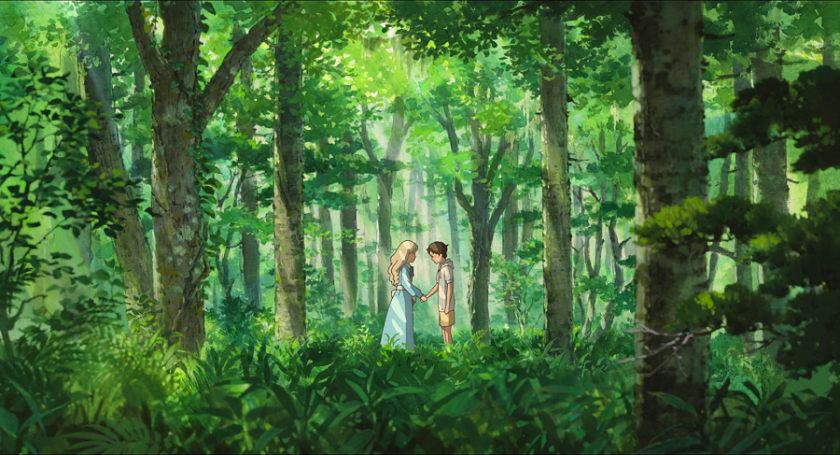When Marnie Was There is the latest production by Japan’s animation powerhouse Studio Ghibli, and the first since the retirement of its creative genius Hayao Miyazaki. An adaptation of the Joan G. Robinson novel of the same name, it’s a confident and powerful account of a young girl’s search for identity.
The book, written in 1967, is infused with the growing public interest in psychology. R D Laing’s classic text The Politics of Experience and The Bird of Paradise, which puts forward the idea that madness stems from people living in an insane world, was published the same year, and Robinson's work shares many of the same themes and ideas.
Transplanted from the original Norfolk to Japan, When Marnie Was There begins with a typical school playground scene, the atmosphere of fun broken by one girl, Anna, distracted from her drawing and plunging into a Munch-like scream of despair. Anna is plagued by sadness and asthma. Her adopted mother worries about her, and summons the doctor. Her unhappiness is not of the usual school variety, but something more existential. The doctor prescribes a change of scenery to help with both ailments. She sets off to stay with her mother’s relatives, a perpetually jolly couple who live in a small village high above a bay. The small community is dominated by the lake house, a deserted mansion that proves powerfully alluring to Anna. She draws it and ventures over to explore.
 There she develops an imaginary friend, Marnie, who is also troubled, neglected by her wealthy family and under the care of a domineering nanny. This imagined world is more real to Anna than her real life, and she plunges into it. But when her imagination collides with the real world it proves unsettling for her. Is she insane?
There she develops an imaginary friend, Marnie, who is also troubled, neglected by her wealthy family and under the care of a domineering nanny. This imagined world is more real to Anna than her real life, and she plunges into it. But when her imagination collides with the real world it proves unsettling for her. Is she insane?
Whether Ghibli’s founder Miyazaki ever actually retired remains moot. He quit animation in 2004, but has since directed Ponyo (2008) and The Wind Rises (2013). This time he insists his retirement is real, which places the future of the Ghibli in doubt. Having been Miyazaki’s key animator, director Hiromansa Yonebayashi could be the key to the studio’s continuing existence. It’s no surprise how good his elegant animation is, but he also expertly handles the gradual and moving story, navigating the tightrope between imagination, memory and experience to produce a story of gathering tension and intrigue.
The conclusion in a spooky tower features twists that an older audience might predict, but younger viewers will find exciting. Its themes are unusual for an animation – darker, although not frightening – which means the tremendously moving and engaging When Marnie Was There will appeal to both adults and children. It also suggests an optimistic future for Studio Ghibli.
Overleaf: watch the trailer to When Marnie Was There














Add comment